Psoriasis blisters on feet. Comprehensive Guide to Pustular Psoriasis: Symptoms, Causes, Treatments, and More
What is pustular psoriasis? What are the symptoms and causes of this skin condition? How can it be diagnosed and treated? Discover the answers to these questions and more in this comprehensive guide.
Understanding Pustular Psoriasis
Pustular psoriasis is a type of skin condition that manifests as white, pus-filled bumps near or within red, inflamed skin patches. Unlike a typical infection, these pustules are not caused by bacteria but are a result of the immune system’s abnormal response, which leads to the formation of these blister-like lesions.
Types of Pustular Psoriasis
There are several types of pustular psoriasis, each with its own distinct characteristics:
- Palmoplantar Pustulosis (PPP): Blisters form on small areas, usually the palms of the hands or soles of the feet. These pus-filled spots can turn brown, peel off, or crust over, and the skin may also crack.
- Acropustulosis: Painful, small lesions appear on the fingertips or toes, which can make it difficult to use those extremities.
- Generalized or Von Zumbusch: This is a rare, serious form of pustular psoriasis where red, painful, and tender skin patches appear over a wide area of the body, accompanied by the rapid development of pus-filled blisters.
Causes and Triggers of Pustular Psoriasis
Pustular psoriasis is an autoimmune condition, where the body’s immune system mistakenly attacks healthy skin cells. Certain triggers can lead to flare-ups, including:
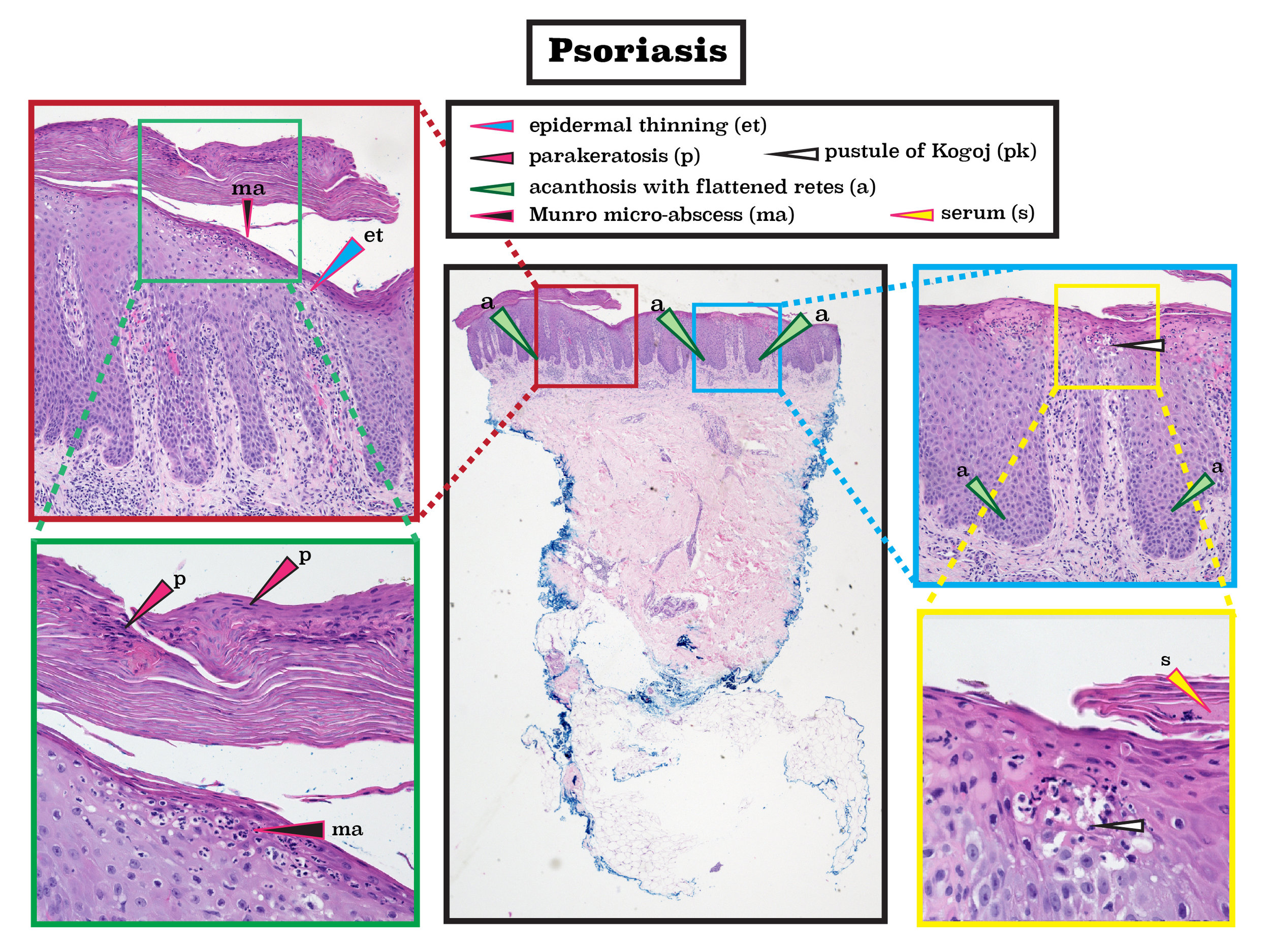
- Medications, such as steroids
- Skin irritants, like harsh skin care products
- Excessive sun exposure
- Stress
- Pregnancy
- Infections
- Hormonal changes
Genetic factors, such as mutations in the IL36RN or CARD14 genes, may also increase the risk of developing pustular psoriasis.
Diagnosis and Evaluation
To diagnose pustular psoriasis, a dermatologist will typically perform a physical examination and ask about your symptoms, medical history, and any family history of psoriasis. They may also order a skin biopsy to confirm the diagnosis and rule out other skin conditions.
In severe cases, the doctor may also order blood tests to check for signs of high white blood cell counts, as well as to assess the function of the kidneys, liver, and levels of electrolytes, calcium, and phosphate.
Treatment Options for Pustular Psoriasis
The primary goals of treatment for pustular psoriasis are to alleviate symptoms and prevent or control outbreaks. The specific treatment approach may depend on the type and severity of the condition:
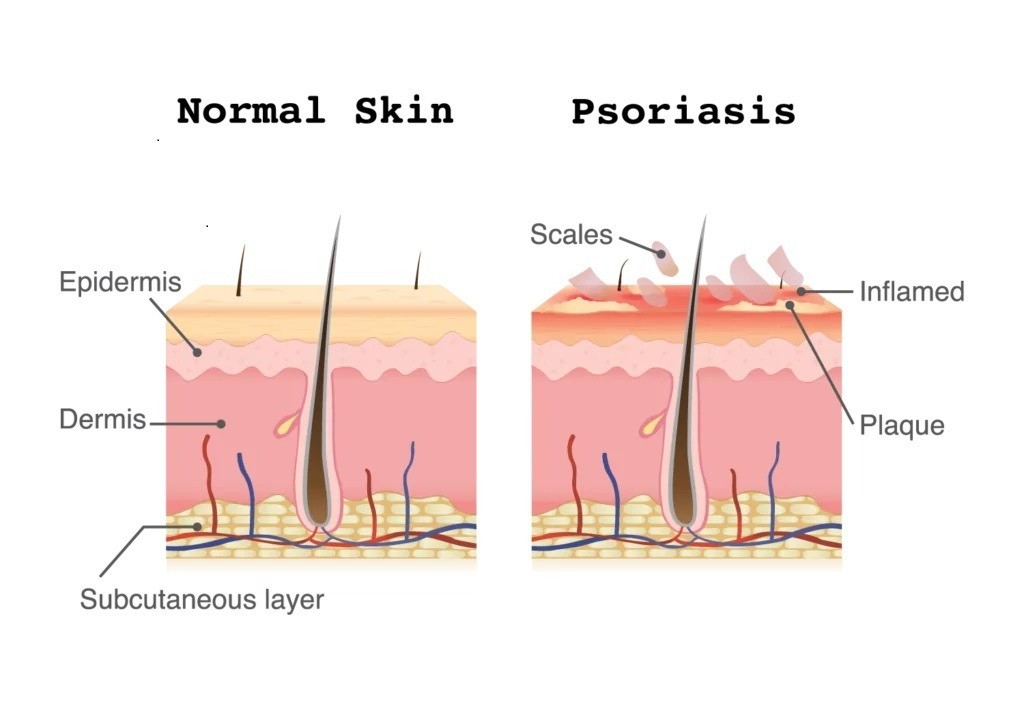
- Topical treatments: Steroid creams, coal tar, salicylic acid, and synthetic vitamin D can help soothe inflammation and reduce scaly skin.
- Phototherapy: Ultraviolet light treatments can be effective for PPP and acropustulosis.
- Oral medications: Drugs like cyclosporine, methotrexate, and acitretin (a retinoid) can help calm the immune system and slow skin outbreaks.
- Biologics: In severe cases, injectable biologic drugs like spesolimab-sbzo (Spevigo) that target specific immune system pathways may be used.
It’s important to note that these treatments can have serious side effects, so patients may need to switch treatments over time.
Managing Pustular Psoriasis Flare-ups
In addition to medical treatments, there are several steps patients can take to manage pustular psoriasis flare-ups:
- Quitting smoking, as it can make the condition harder to treat
- Practicing stress-reducing activities like exercise, yoga, or meditation
- Keeping the skin moisturized and using cotton gloves or socks to lock in moisture
- Applying cool compresses to soothe inflamed, painful areas
- Taking an oatmeal bath to alleviate itching and discomfort
Preventing Complications and Scarring
Proper management and treatment of pustular psoriasis are essential to prevent complications, such as skin infections, and to minimize the risk of scarring. Patients should work closely with their dermatologist to develop an effective, long-term treatment plan to control the condition and maintain healthy skin.
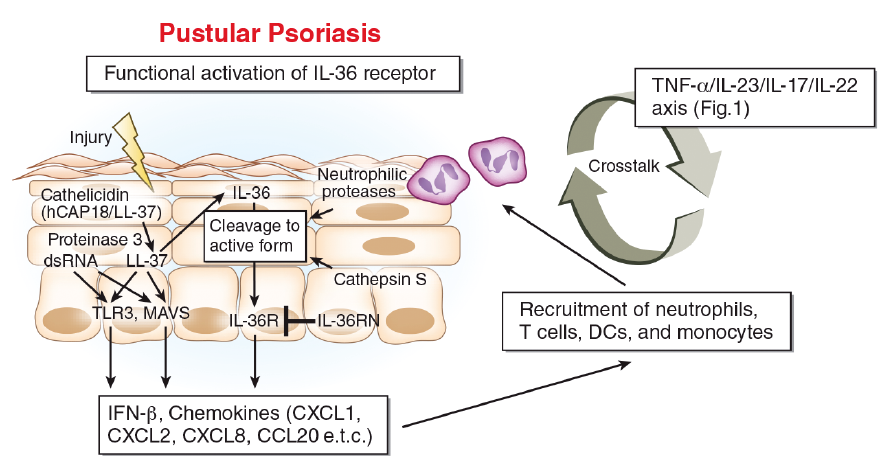
Pustular Psoriasis Picture, Symptoms, Causes, Treatments, and More
Written by WebMD Editorial Contributors
- Types and Symptoms
- Causes and Triggers
- Diagnosis
- Treatment
- What to Do About Scarring
Pustular psoriasis is a skin disease. You’ll see white bumps filled with pus near or inside red skin blotches. These are called pustules. They can hurt and be scaly, flaky, or itchy.
It’s most likely to affect:
- The palms of your hands
- The soles of your feet
- Your fingers and toes
Even though you see pus in your bumps, it’s not an infection. You can’t catch pustular psoriasis from someone else or give it to others.
Pustular psoriasis usually happens to adults. It’s rare for kids to have it. But it can run in families.
You can get pustular psoriasis on its own or with another kind of psoriasis called plaque psoriasis.
There are multiple types of pustular psoriasis. They’re based on where the blister outbreaks are or how fast they popped up.
They’re based on where the blister outbreaks are or how fast they popped up.
- Palmoplantar pustulosis (PPP): Blisters form on small areas of your body, usually your palms or the soles of your feet. These pus-filled spots can turn brown, peel off, or crust over. Your skin can crack, too. This type of psoriasis may come and go. People who smoke are more likely to get this form.
- Acropustulosis: Small, very painful lesions pop up on your fingertips or toes. The pain can make it hard to use your fingers or toes. In rare cases, it can cause nail or even bone damage.
- Generalized or Von Zumbusch: Red, painful, tender skin blotches show up over a wide area of your body, and pus-filled blisters pop up soon after. Your skin may be very itchy. You also might be very tired or have a fever, chills, dehydration, nausea, weak muscles, headache, joint pain, a fast pulse, or weight loss. This is a rare, serious disease. See your doctor right away if you have these symptoms.

Psoriasis is an autoimmune disease. Your immune system usually sends white blood cells to fight disease in your body. But in this case, they attack your healthy skin by mistake.
A few things can trigger psoriasis flares:
- Medications, such as steroids
- Something that irritates your skin, like a topical cream or harsh skin care product
- Too much sunlight
- Stress
- Pregnancy
- Infection
- Hormones
A mutation, or change, in one of two specific genes (IL36RN or CARD14) may make you more likely to get pustular psoriasis. If you have one of these gene mutations, one of those triggers could set off a flare.
You’ll see a dermatologist (a skin doctor) who will ask about your symptoms, your medical history, and any family history of psoriasis.
They may need to take a small sample of your inflamed skin to look at under a microscope. That’s called a biopsy.
If you have a severe flare, they may also test your blood for signs of high white blood cell counts; signs that your kidney and liver are working the way they should; and whether you have healthy levels of electrolytes, calcium, and phosphate.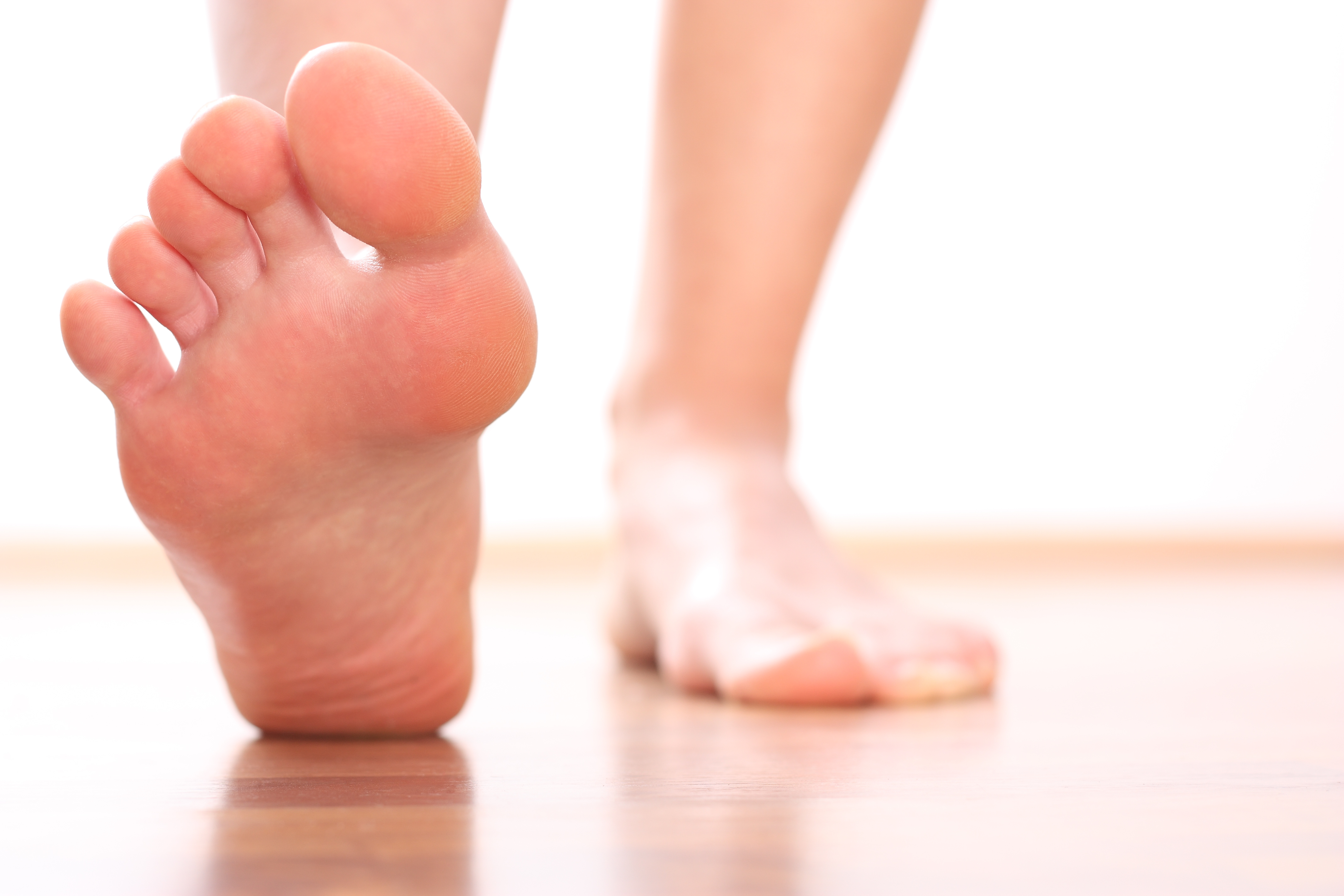
The goal of treatment is to ease your symptoms and control outbreaks. What you take may depend on your type of pustular psoriasis.
Small, local outbreak: Your doctor may try a topical steroid cream first to treat the sores. Coal tar or salicylic acid creams can help with scaly skin. Synthetic vitamin D can help soothe the inflammation. You’ll slather on lotions, creams, or ointments to soothe and prevent cracked skin. Then you’ll slip on cotton gloves or socks to hold the moisture in. You might get relief from a cool compress on spots that bother you or from an oatmeal bath.
PPP and acropustulosis outbreaks can be stubborn. Your doctor may try ultraviolet light treatments on the inflamed skin. This is called phototherapy.
Oral drugs like cyclosporine or methotrexate may help calm down your immune system. Acitretin (Soriatane) is another drug that can slow skin outbreaks. It’s a retinoid, or a synthetic form of vitamin A.
All these drugs can have serious side effects, so you may need to switch treatments from time to time.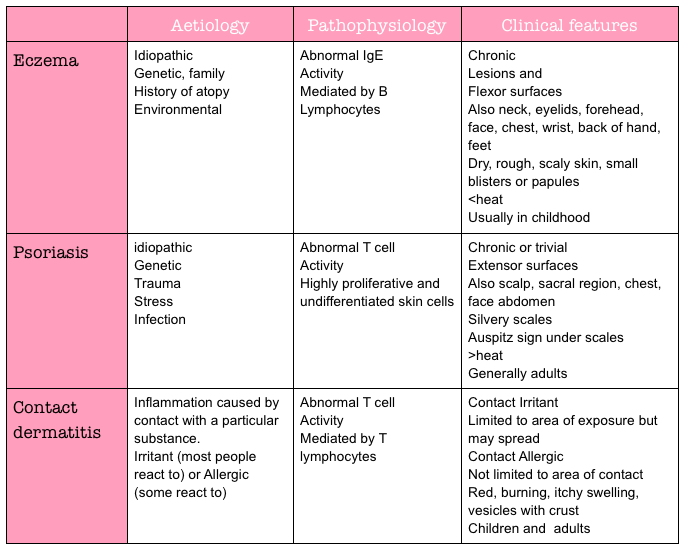
If you smoke, try to quit. Smoking makes your psoriasis harder to treat. Try to do things to lower your stress levels, like exercise, yoga, tai chi, or meditation. Some people feel better, although no studies have proven this.
Widespread outbreak: If you have generalized or Von Zumbusch psoriasis, get medical care right away. You’ll need fluids along with treatments to prevent infection, ease your fever, and calm inflamed, broken skin. While you’re in the hospital, you need to rest, stay hydrated, and keep cool.
Your doctor may treat you with injections of spesolimab-sbzo (Spevigo), a new antibody that blocks signals within the immune system to stop the flare.
Your doctor may also try acitretin, cyclosporine, methotrexate, steroids, or biologics (drugs made from living cells) like etanercept or infliximab to get your flare under control. Once your skin redness and pustule outbreaks have calmed down, you can also try PUVA, where you take a drug called psoralen and then beam ultraviolet light at the affected area of your skin. Apremilast (Otezla) is also sometimes used.
Apremilast (Otezla) is also sometimes used.
Sometimes, one treatment doesn’t do the trick. You may need to combine them to feel better.
Psoriasis itself doesn’t cause scarring. But patches can be itchy, which may lead you to scratch them. The more you scratch, the more damage you do to your skin.
The best way you can help prevent psoriasis scarring and discoloration is to keep your condition well controlled. Some ways to avoid a psoriasis flare include:
- Manage stress. It’s been shown to worsen psoriasis.
- Use bug repellent and sunscreen to prevent injury to your skin.
- Limit alcohol. It can make psoriasis medications less effective.
- Don’t smoke, and avoid people who do.
- Limit showers and baths to 10 minutes, make them lukewarm, and slather on a fragrance-free moisturizing ointment or cream immediately afterward.
- Try not to cut yourself during shaving.
Taking the right medications can also get your psoriasis under control.
Top Picks
Pustular Psoriasis Picture, Symptoms, Causes, Treatments, and More
Written by WebMD Editorial Contributors
- Types and Symptoms
- Causes and Triggers
- Diagnosis
- Treatment
- What to Do About Scarring
Pustular psoriasis is a skin disease. You’ll see white bumps filled with pus near or inside red skin blotches. These are called pustules. They can hurt and be scaly, flaky, or itchy.
They can hurt and be scaly, flaky, or itchy.
It’s most likely to affect:
- The palms of your hands
- The soles of your feet
- Your fingers and toes
Even though you see pus in your bumps, it’s not an infection. You can’t catch pustular psoriasis from someone else or give it to others.
Pustular psoriasis usually happens to adults. It’s rare for kids to have it. But it can run in families.
You can get pustular psoriasis on its own or with another kind of psoriasis called plaque psoriasis.
There are multiple types of pustular psoriasis. They’re based on where the blister outbreaks are or how fast they popped up.
- Palmoplantar pustulosis (PPP): Blisters form on small areas of your body, usually your palms or the soles of your feet. These pus-filled spots can turn brown, peel off, or crust over. Your skin can crack, too. This type of psoriasis may come and go. People who smoke are more likely to get this form.

- Acropustulosis: Small, very painful lesions pop up on your fingertips or toes. The pain can make it hard to use your fingers or toes. In rare cases, it can cause nail or even bone damage.
- Generalized or Von Zumbusch: Red, painful, tender skin blotches show up over a wide area of your body, and pus-filled blisters pop up soon after. Your skin may be very itchy. You also might be very tired or have a fever, chills, dehydration, nausea, weak muscles, headache, joint pain, a fast pulse, or weight loss. This is a rare, serious disease. See your doctor right away if you have these symptoms.
Psoriasis is an autoimmune disease. Your immune system usually sends white blood cells to fight disease in your body. But in this case, they attack your healthy skin by mistake.
A few things can trigger psoriasis flares:
- Medications, such as steroids
- Something that irritates your skin, like a topical cream or harsh skin care product
- Too much sunlight
- Stress
- Pregnancy
- Infection
- Hormones
A mutation, or change, in one of two specific genes (IL36RN or CARD14) may make you more likely to get pustular psoriasis. If you have one of these gene mutations, one of those triggers could set off a flare.
If you have one of these gene mutations, one of those triggers could set off a flare.
You’ll see a dermatologist (a skin doctor) who will ask about your symptoms, your medical history, and any family history of psoriasis.
They may need to take a small sample of your inflamed skin to look at under a microscope. That’s called a biopsy.
If you have a severe flare, they may also test your blood for signs of high white blood cell counts; signs that your kidney and liver are working the way they should; and whether you have healthy levels of electrolytes, calcium, and phosphate.
The goal of treatment is to ease your symptoms and control outbreaks. What you take may depend on your type of pustular psoriasis.
Small, local outbreak: Your doctor may try a topical steroid cream first to treat the sores. Coal tar or salicylic acid creams can help with scaly skin. Synthetic vitamin D can help soothe the inflammation. You’ll slather on lotions, creams, or ointments to soothe and prevent cracked skin. Then you’ll slip on cotton gloves or socks to hold the moisture in. You might get relief from a cool compress on spots that bother you or from an oatmeal bath.
Then you’ll slip on cotton gloves or socks to hold the moisture in. You might get relief from a cool compress on spots that bother you or from an oatmeal bath.
PPP and acropustulosis outbreaks can be stubborn. Your doctor may try ultraviolet light treatments on the inflamed skin. This is called phototherapy.
Oral drugs like cyclosporine or methotrexate may help calm down your immune system. Acitretin (Soriatane) is another drug that can slow skin outbreaks. It’s a retinoid, or a synthetic form of vitamin A.
All these drugs can have serious side effects, so you may need to switch treatments from time to time.
If you smoke, try to quit. Smoking makes your psoriasis harder to treat. Try to do things to lower your stress levels, like exercise, yoga, tai chi, or meditation. Some people feel better, although no studies have proven this.
Widespread outbreak: If you have generalized or Von Zumbusch psoriasis, get medical care right away. You’ll need fluids along with treatments to prevent infection, ease your fever, and calm inflamed, broken skin. While you’re in the hospital, you need to rest, stay hydrated, and keep cool.
While you’re in the hospital, you need to rest, stay hydrated, and keep cool.
Your doctor may treat you with injections of spesolimab-sbzo (Spevigo), a new antibody that blocks signals within the immune system to stop the flare.
Your doctor may also try acitretin, cyclosporine, methotrexate, steroids, or biologics (drugs made from living cells) like etanercept or infliximab to get your flare under control. Once your skin redness and pustule outbreaks have calmed down, you can also try PUVA, where you take a drug called psoralen and then beam ultraviolet light at the affected area of your skin. Apremilast (Otezla) is also sometimes used.
Sometimes, one treatment doesn’t do the trick. You may need to combine them to feel better.
Psoriasis itself doesn’t cause scarring. But patches can be itchy, which may lead you to scratch them. The more you scratch, the more damage you do to your skin.
The best way you can help prevent psoriasis scarring and discoloration is to keep your condition well controlled.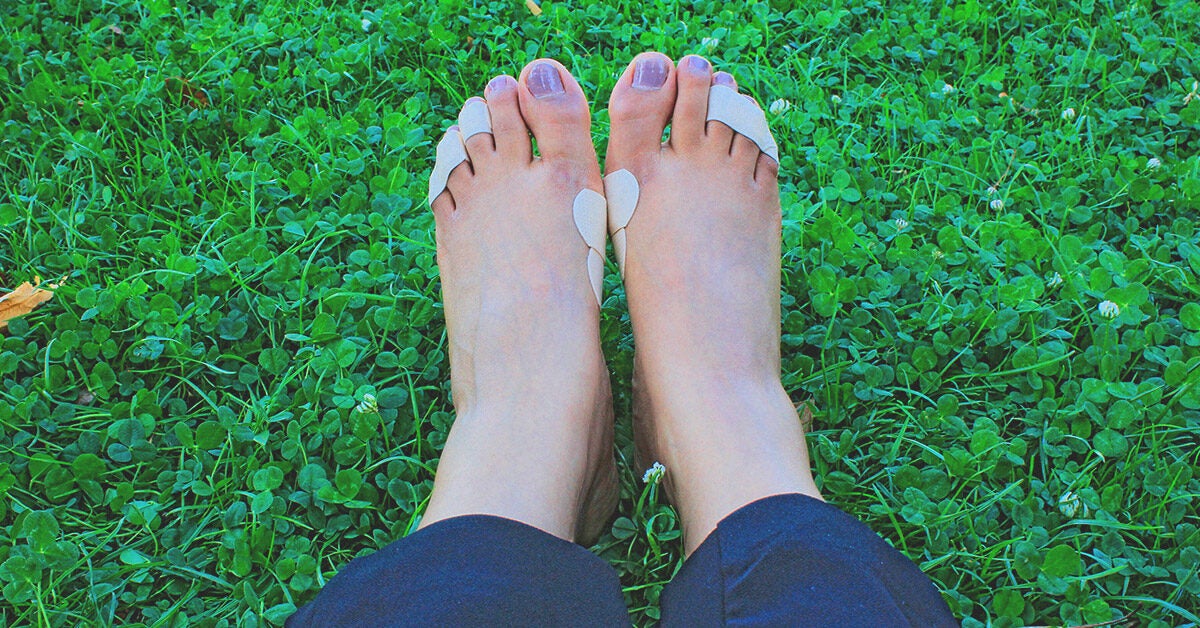 Some ways to avoid a psoriasis flare include:
Some ways to avoid a psoriasis flare include:
- Manage stress. It’s been shown to worsen psoriasis.
- Use bug repellent and sunscreen to prevent injury to your skin.
- Limit alcohol. It can make psoriasis medications less effective.
- Don’t smoke, and avoid people who do.
- Limit showers and baths to 10 minutes, make them lukewarm, and slather on a fragrance-free moisturizing ointment or cream immediately afterward.
- Try not to cut yourself during shaving.
Taking the right medications can also get your psoriasis under control.
Top Picks
Psoriasis – what causes it and how to treat it
02/11/2020
Small red spots on the bend of the elbows are not so easy to notice, so a patient with psoriasis may not know about the onset of the disease for a long time. However, sooner or later the symptoms become more pronounced and the diagnosis is confirmed by a specialist. But even with a timely visit to the doctor, it is not necessary to talk about a complete cure, rather, about a long and stable remission, during which there are no signs of illness. What is the nature and causes of the disease, as well as the effective treatment of psoriasis will be discussed below.
However, sooner or later the symptoms become more pronounced and the diagnosis is confirmed by a specialist. But even with a timely visit to the doctor, it is not necessary to talk about a complete cure, rather, about a long and stable remission, during which there are no signs of illness. What is the nature and causes of the disease, as well as the effective treatment of psoriasis will be discussed below.
Psoriasis is a non-infectious inflammatory dermatological disease. Its main signs are the presence of dry plaques on the skin, spots of red or pink color that rise above the surface of the skin. Most often, these papules have clear boundaries and are covered with small scaly growths of white, grayish color. The spots are localized on the elbow and knee folds, in the groin, intergluteal fold, and also on the scalp. If left untreated, the signs of psoriasis are more aggressive and cover a large area of the skin.
Statistics show that most often the first symptoms of the disease appear at the age of 16-25 or after 55 years, but the occurrence in another age period is also possible. The percentage of men among patients is higher.
The percentage of men among patients is higher.
The disease is chronic and does not pose a threat to life, even without treatment, it almost never affects the general condition of a person. But the very fact of its presence causes psychological discomfort and affects social life. Therefore, it is important to choose an effective therapy for the treatment of psoriasis and minimize the negative factors in the development of the disease.
Causes of psoriasis
The origin and development of psoriasis is not fully understood. It has been proven that in pathology the mechanism of skin cell division is disrupted. The cells of the epidermis, keratocytes, which are responsible for the protective function, are characterized by a long life cycle, during which they migrate from the depths of the epidermis to its surface. There they form a stratum corneum and exfoliate. This is how normal skin renewal occurs.
With psoriasis, this process is greatly accelerated and instead of the prescribed month, it takes several days.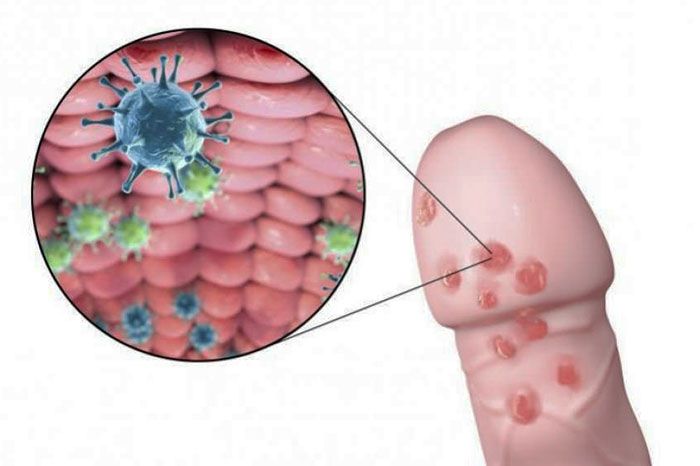 The body cannot cope with the accumulation of keratinized particles: this leads to the formation of seals and scales. The immune system, in turn, reacts to the violation with itching and redness, inflammation and swelling of the dermis – the middle layer of the skin.
The body cannot cope with the accumulation of keratinized particles: this leads to the formation of seals and scales. The immune system, in turn, reacts to the violation with itching and redness, inflammation and swelling of the dermis – the middle layer of the skin.
The following factors can provoke the development of pathology:
- hereditary. In the presence of a violation in one of the parents, the chance of getting sick in a child increases significantly. If the mother and father are affected, the likelihood of the disease is above 50%;
- frequent stress. Scientists have identified a direct relationship between the progression of the disease and the interaction of peptides, which is observed with prolonged neuroses and psychological conditions. Psychosomatics works with psoriasis: the body responds to a person’s unwillingness to contact the outside world due to a depressed state with external disturbances that can limit social life;
- chronic infectious diseases and injuries.

People with dry skin that is constantly chafed and injured may need treatment.
How to treat psoriasis
The treatment regimen almost always involves the use of topical agents at the initial stage, which are combined with drugs for oral administration if the form is advanced. The effectiveness of treatment largely depends on the psychological state, so it is important to combine drug exposure with psychotherapy.
types, symptoms, causes. Treatment of psoriasis
Psoriasis is a chronic, immune-mediated inflammatory skin disease, accompanied by a gradual involvement in the pathological process of not only the skin and mucous membranes, but also internal organs: the nervous system, cardiovascular system, gastrointestinal tract, urinary system and musculoskeletal system .
Around 125 million people worldwide have psoriasis, according to the 2016 WHO global survey.
Psoriasis significantly impairs the quality of life and performance, reduces social activity, changes the personality and psychological traits of a person, and can also lead to disability in the absence of properly selected treatment and the development of psoriatic arthritis (lesion of the musculoskeletal system in psoriasis).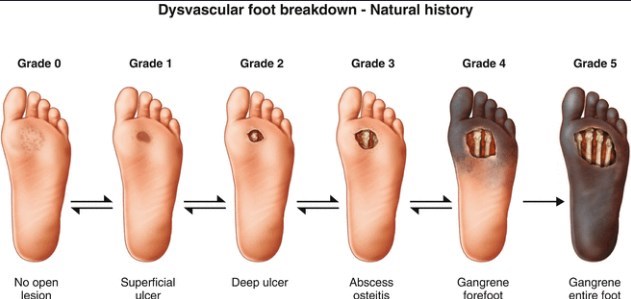
Types of psoriasis
The clinical features of psoriasis vary depending on the forms of the disease. Traditionally, the clinical forms of the disease include:
- plaque psoriasis,
- guttate psoriasis,
- pustular psoriasis,
- psoriatic erythroderma (more than 90% of the skin affected),
- Arthropathic psoriasis.
Although one variant of the disease usually predominates in an individual, different types of psoriasis can co-exist at any time during the course of the disease.
Vulgar (plaque) psoriasis in frequency of occurrence is approximately 80-90% of all clinical forms of the disease and is manifested by erythematous-squamous plaques covered with mica silver-white scales.
The areas most often affected by rashes in psoriasis:
- skin of the head (hairy part) ;
- skin body ;
- extensor surfaces limbs (elbows and knees) ;
- in some patients, inverse (inverse) psoriasis develops, since instead of the extensor surfaces, the flexion ones suffer.
 A special localization of the manifestation of rashes in the inverse form of psoriasis is genital area .
A special localization of the manifestation of rashes in the inverse form of psoriasis is genital area .
One of the manifestations of psoriasis, along with rashes on the skin, is the defeat of nails – psoriatic onychodystrophy. Nails in psoriasis are involved in the pathological process in 80% of patients, regardless of the localization of the process (head psoriasis, psoriasis on the hands or feet, etc.).
Psoriasis: causes
Over the past decade, new genetic and immunological relationships have been identified in psoriasis, but in most patients, external triggers for psoriasis are unknown.
The disease psoriasis is polygenetic, in which multiple identified alleles (HLA-Cw6 and others) and loci create genetic risks for its development.
The risk of developing psoriasis is approximately 40% if both parents are affected, 14% if one of the parents is affected, and 6% if a brother or sister is affected.
In genetically susceptible individuals, psoriasis can be exacerbated by a number of environmental and behavioral factors, including:
- skin injuries;
- infections;
- smoking;
- alcohol abuse;
- taking medicines;
- stress.
Features of psoriasis
Psoriasis is a non-communicable disease, patients with psoriasis are not contagious. At present, an important role of immune-mediated inflammation has been established, which is due to complex mechanisms of interaction between keratinocytes and cells of innate (dendritic cells, macrophages, NK- and NKT-cells) and adaptive immunity (T-lymphocytes), as well as the secretion of pro-inflammatory cytokines (IL-12, IL-23, IL-17, IL-22, TNF-α, etc.). This leads to an inflammatory cascade that manifests as psoriatic disease.
Treatment of psoriasis
Modern ideas about the pathogenesis, genetics, concomitant diseases and the use of genetically engineered biological drugs contribute to the achievement of high and rapid results in the treatment of psoriasis.

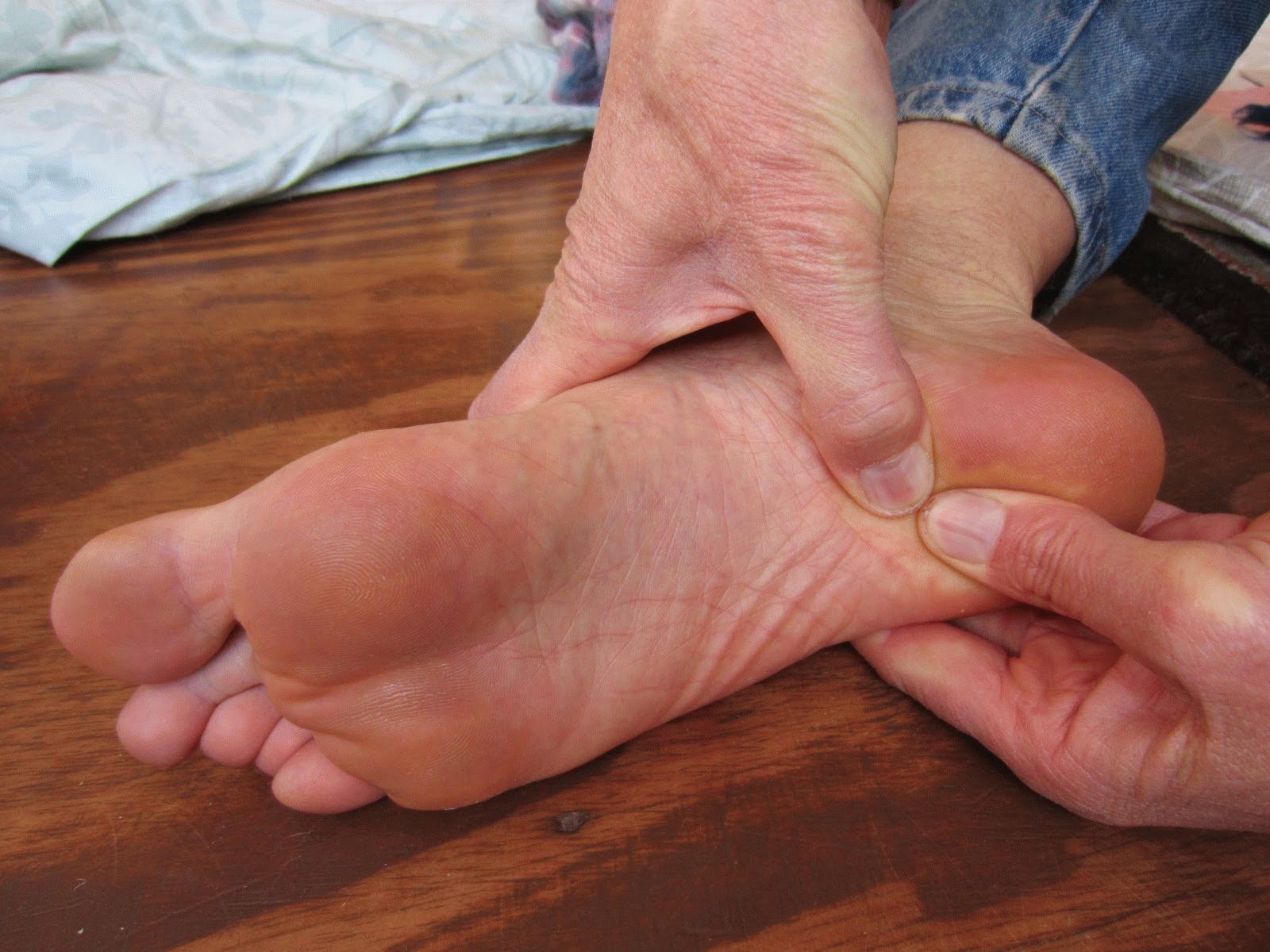

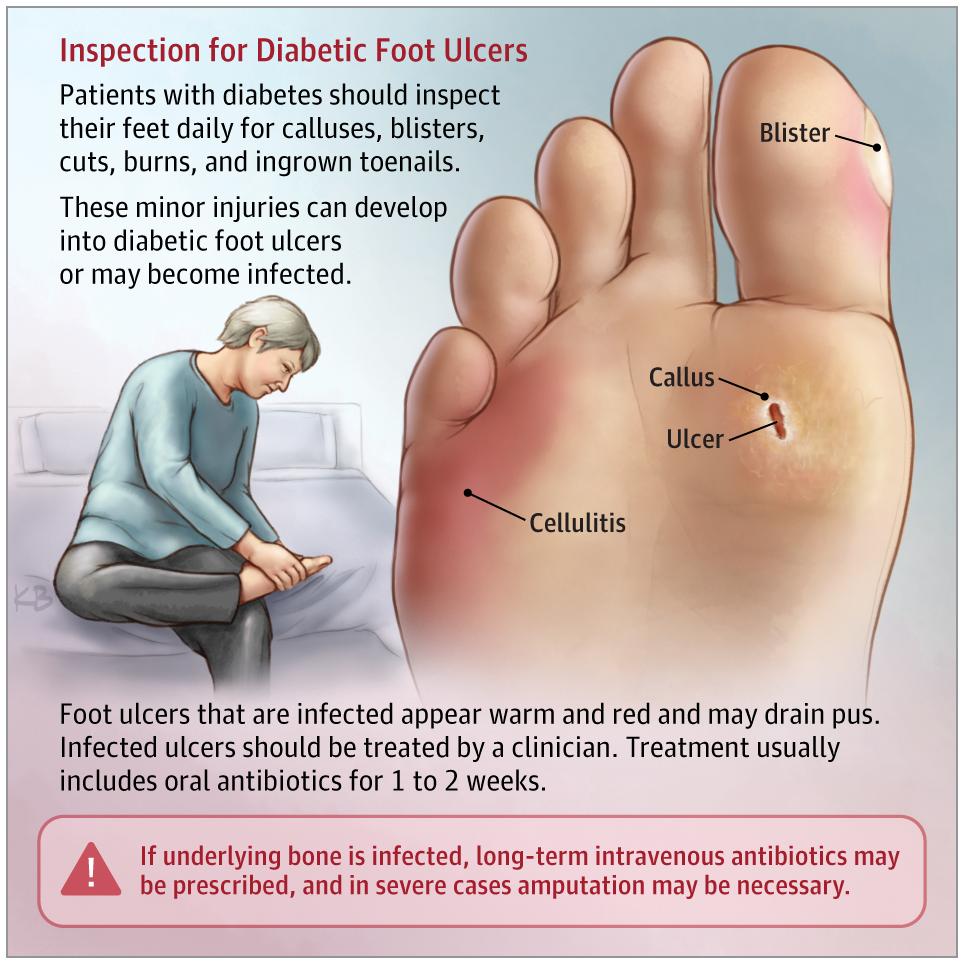
 A special localization of the manifestation of rashes in the inverse form of psoriasis is genital area .
A special localization of the manifestation of rashes in the inverse form of psoriasis is genital area .